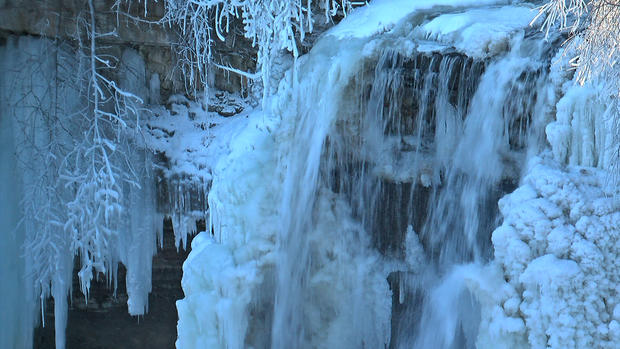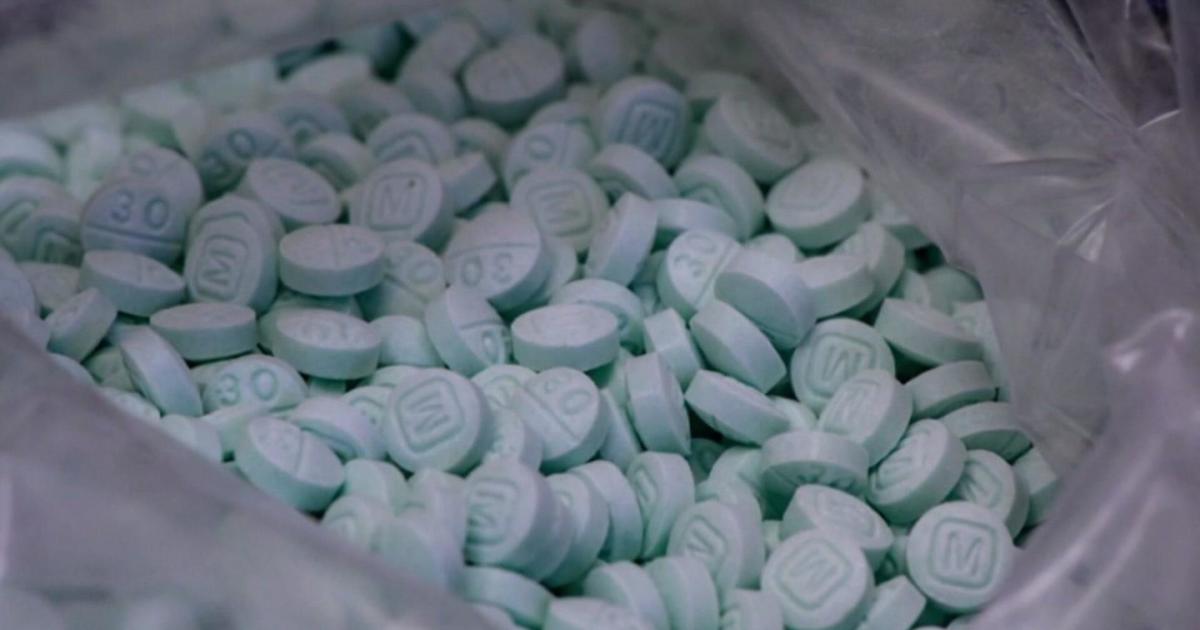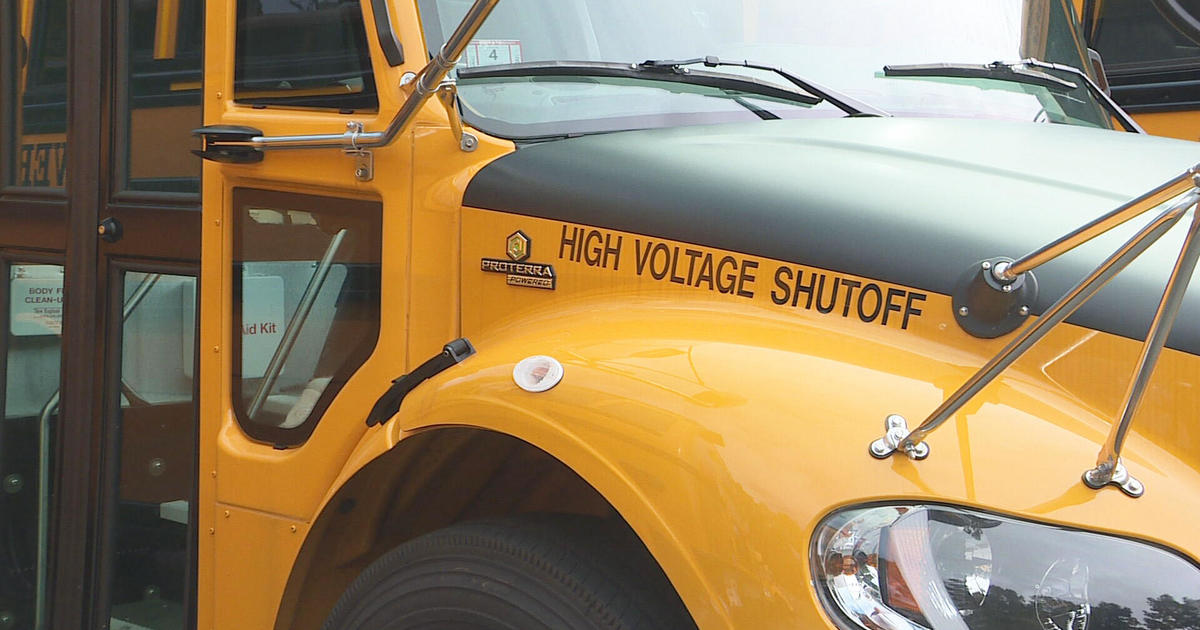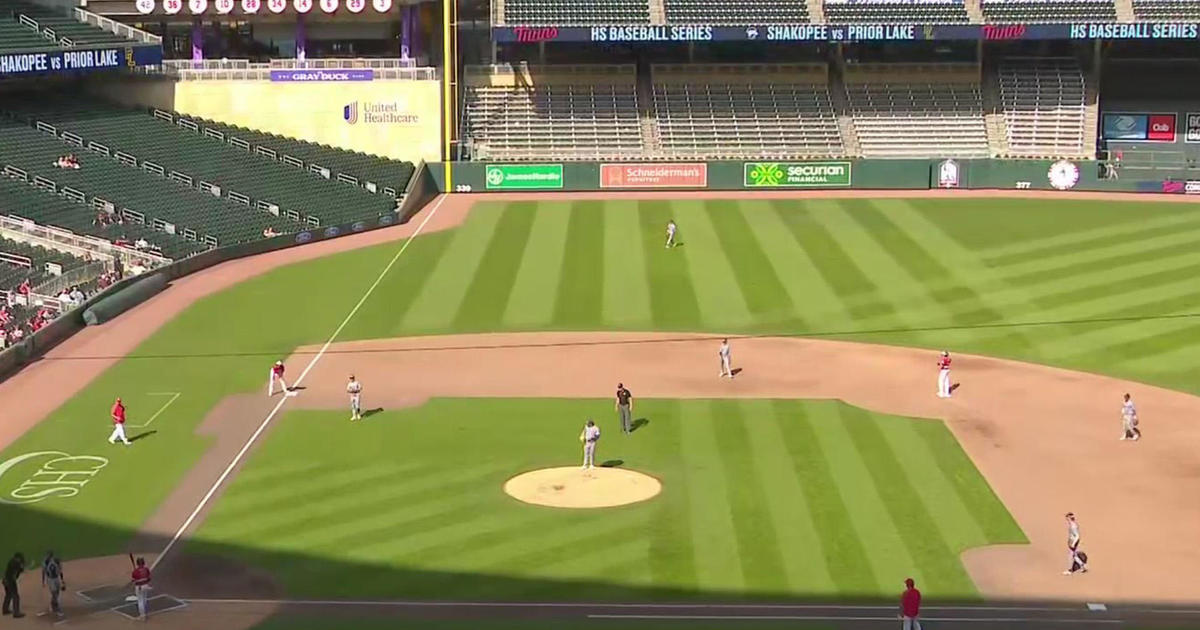How Does A Waterfall Freeze?
This story was originally published on Jan. 25, 2021.
MINNEAPOLIS (WCCO) -- Waterfalls can be a majestic site, especially this time of year in Minnesota and Wisconsin.
The frigid temperatures can cause icicles to form, sometimes even freezing the flow to a complete stop. That had Ginny from Marine on St. Croix wondering: How does a waterfall freeze? Good Question.
Monday afternoon, many families stopped by Minnehaha Falls in Minneapolis to soak in the view. Some people got dangerously close, enough to not only get soaked, but be in range of falling ice.
The combination of flowing and frozen water is a risky situation to walk on. But two years ago, the Polar Vortex had all the right elements to stop this waterfall cold, according to National Weather Service Meteorologist Paige Marten.
"The physics behind the freezing can be a little bit more complicated," Marten said. "It depends on the weather, the temperature, the rate of flow from the river that's feeding into the waterfall."
WCCO asked several kids near the falls what it would take to make a waterfall freeze. They correctly answered "cold air" and specifically, temperatures at or below 32 degrees Fahrenheit. Even one night of temperatures 32 degrees or lower can make ice form on a lake, but that's not enough time for a waterfall.
"It has to be over a period of time of really cold temperatures," Marten said.
Unlike a lake or pond, a waterfall and its source -- rivers and streams -- are constantly moving and mixing the water. But if the temperature stays below freezing for an extended period of time, the water will supercool. That means it's below 32 degrees but still liquid. During that process, frazil ice forms.
"They're just a disorganized collection of little ice particles," Marten said.
She says the particles are about a millimeter in size. Frazil ice usually appears in turbulent water.
Does a waterfall freeze from the top or bottom? Marten said it freezes at both ends and in between. The frazil ice attaches to cold rocks or cliff hangs depending on the falls' terrain. It then becomes an anchor for which more ice can form as water flows over.
"Often times it looks like it forms from the top and then kind of drags down like an icicle would," she said. "You'll see a little collection [of ice] kind of at the bottom and at the top and eventually, especially if there's a rock base or a cliff behind it, that'll kind of help connect it with how cold the rock is."
The waterfall will only freeze over after the water source feeding it freezes first. And the size of that water source plays a role.
"Niagara Falls is never going to freeze. But it can get cold enough where the mist that comes off of it freezes and can actually form some pretty cool ice sculptures," Marten said.
With January often being brutally frigid, it's almost a surprise Minnehaha Falls keeps on flowing. It's super cool symptom of a mild month so far.




